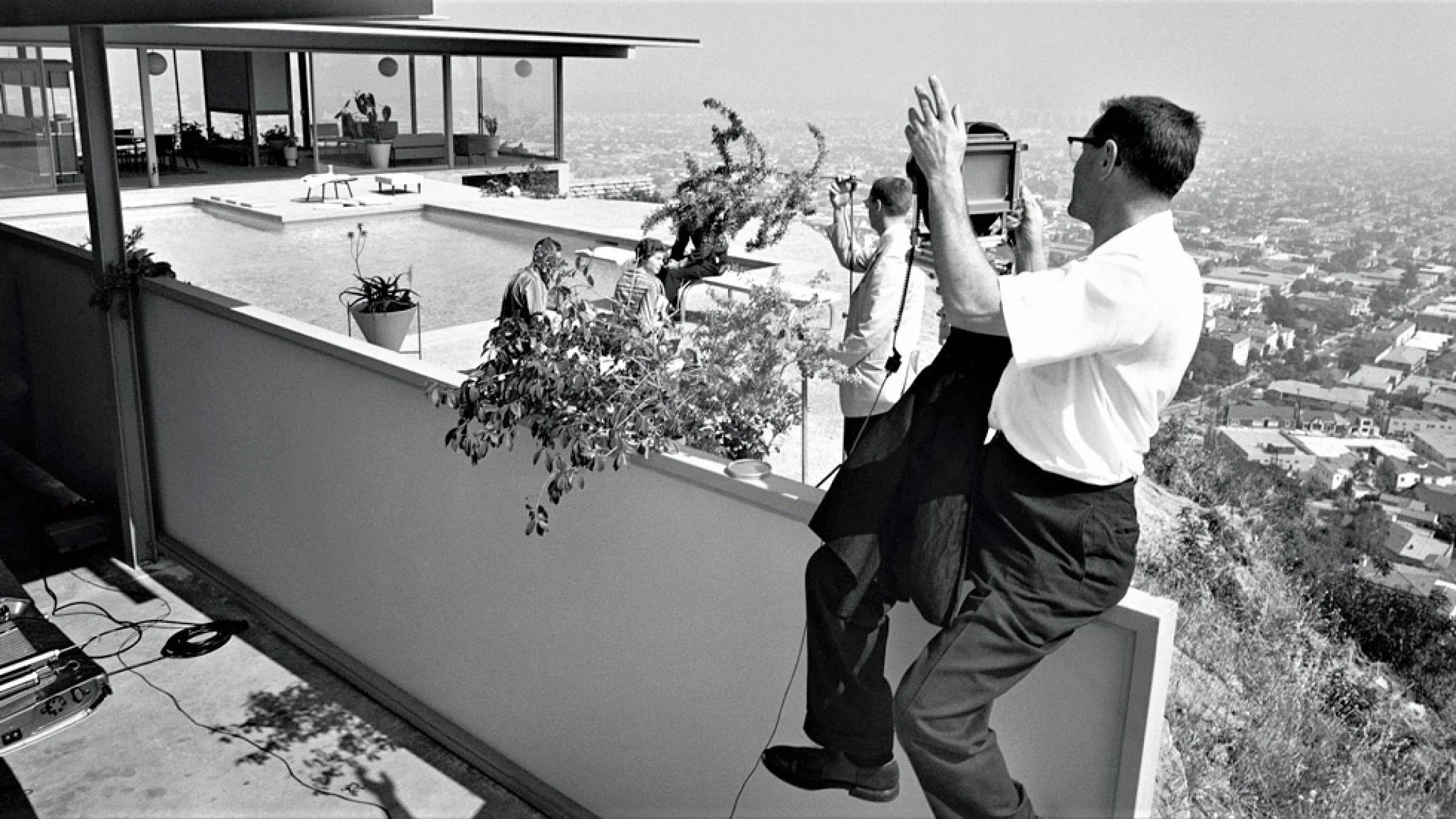Visual Acoustics: The Modernism of Julius Shulman
A tribute to a man, to his art and to the architecture that he loved.
Behind a cumbersome, off-putting title lies a film that is imperfect but far more readily appealing than that title would lead you to expect. Eric Bricker's documentary is a sensible no-frills affair, one that in studying the career of the American architectural photographer Julius Shulman will automatically please those with a specialist interest in the subject but will also be suitably informative for others. Shulman came close to becoming a centenarian (he lived from 1910 to 2009) and Bricker's film, only now getting a release here, was put together in 2008 and made ample use of footage of Shulman shot late in his lifetime. This proves to be a great boon since the elderly photographer, also seen in archive TV material, proves to be a thoroughly engaging presence.
Shulman specialised in photographing architecture and was born at the right time since he had a special feeling for American modernism as fostered by such men as Rudolph Schindler and Richard Neutra. His ability to create photographs that captured the character and appeal of their buildings made him a key figure whose work helped to promote enthusiasm for these designs. He would win approval from Frank Lloyd Wright going on to be associated with other major architects such as John Lautner and Pierre Koenig but also seeking out lesser known architects who were helped by having their work photographed by him.
One of Shulman's best known pictures was of the Stahl house in Los Angeles taken in 1960 and it is one of several buildings which we see being revisited by Shulman in his nineties. We also see him reunited with one of the architects with whom he was associated, the equally elderly E. Stewart Williams who built a house for Frank Sinatra. Naturally Shulman's own photographs feature here in memorable black and white images, but the film's photographer Aiken Weiss faces up to the challenge of avoiding anticlimax in his views in colour of the buildings as they survive.
I referred to the film being less than perfect and that is because the last section in particular feels ill-judged. Arguably the similarity of the material throughout (this is very much a film about Shulman's work rather than about his life) would have suited a two-part television programme better than the present format. What we have is largely chronological and that does enable the film to build to a climax, first with Shulman retiring when modernist architecture fell out of favour and then by showing how his pictures played a strong role in bringing it back into fashion. However, the fact that this provides a climax to the film turns into a disadvantage when the film continues with other bits and pieces for another fifteen minutes or so. Most of these episodes (they include a birthday party, the award of a degree as a doctor of architecture and conversations with Frank Gehry) are not without value in themselves, but the placing of these scenes and their bittiness weakens the sense of structure in the film and makes it feel overlong even though it lasts for only 84 minutes. That's a pity, but even so the film makes Shulman a splendid central presence and valuably records his artistry and the buildings he loved. The narration is by Dustin Hoffman but you would hardly notice.
MANSEL STIMPSON
Featuring Julius Shulman, Judy McKee, Rob Rothblatt, Mark Schindler, Raymond Neutra, E. Stewart Williams, Dante Spinotti, Pierluigi Serraino, Frank Gehry, Tom Ford, Thomas E. Hines, Kelly Lynch.
Dir Eric Bricker, Pro Eric Bricker and Babette Zilch, Ph Aiken Weiss and Dante Spinotti, Ed Charlton McMillan, Music Charlie Campagna.
Visual Acoustics/Shulman Project Pictures/Out of the Box-Network Distributing.
84 mins. USA. 2008. Rel: 30 November 2020. Available on VOD. No Cert.


